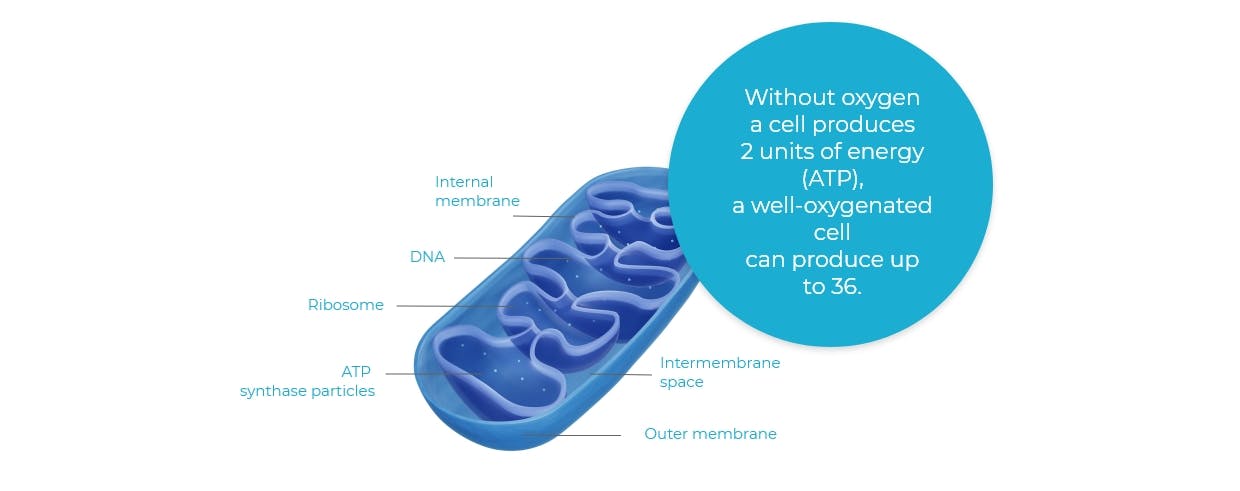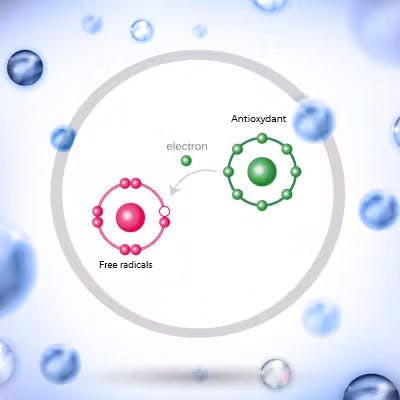Cell oxygenation

Air pollution, poor diet, and stress...
It's not easy to breathe effectively with our current lifestyles.
We are all lacking in oxygen, yet the air we breathe contains enough to meet our needs. Optimal oxygenation is essential to live, protect, maintain, and improve our health and natural defenses.
> Oxygen is a basic need
What are oxygen and mitochondria for?
The primary role of oxygen is to allow the body to produce energyfor its own needs (maintaining internal temperature, for example) and for all of its activities, physical, psychological and cerebral.
Everything takes place on a cellular level, in small organelles called mitochondria: in the presence of oxygen, they transform the nutrients resulting from the metabolism into energy that’s directly usable by the cell (ATP).
Mitochondria can be compared to ‘batteries’ responsible for producing, storing and distributing the energy needed by the cell.
Human cells can contain 1,500 mitochondria and up to 6,000 for nerve cells.
Good mitochondrial health is the source of vital energy.

Oxygen and free radicals
The complexity of the effects of oxygen in the body is extreme: assimilation and elimination depend on it.
They are a source of endogenous free radicals, which promote the fight against pathogens and protect our immunity.
However, these very reactive radical molecules can be in excess, if oxygenation is insufficient or, on the contrary, in the event of hyperoxygenation.
The balance and control of free radicals are no longer guaranteed. They become extremely harmful to the body, which draws on its anti-radical reserves and weakens.
A free radical is a chemical species (atom or molecule) that has a single, i.e. unpaired, electron.
This characteristic makes it unstable and makes it highly reactive compared with surrounding molecules.
A free radical stabilises to the detriment of the neighbouring molecule which in turn becomes a free radical and so on.

How does oxygen reach the cells?
The air around us contains approximately 21% oxygen. When we inhale, it penetrates to the alveoli whose walls are lined with blood capillaries. In a human, this contact surface can reach more than 75m² per lung, or a third of the surface of a tennis court. There, oxygen passes into the blood which irrigates all the cells of the body.. When exhaling, the blood releases the carbon dioxide it is loaded with into the lungs.
What is the role of hemoglobin?
In the blood, most of the oxygen combines with the hemoglobin of the red blood cells which serves as its carrier. This protein contains iron which attracts oxygen and allows it to cross the alveolar wall, to be transported and delivered to the cells. It is also what captures carbon dioxide, a waste product of cellular respiration, and brings it back to the lungs where it is eliminated in the exhaled air.

